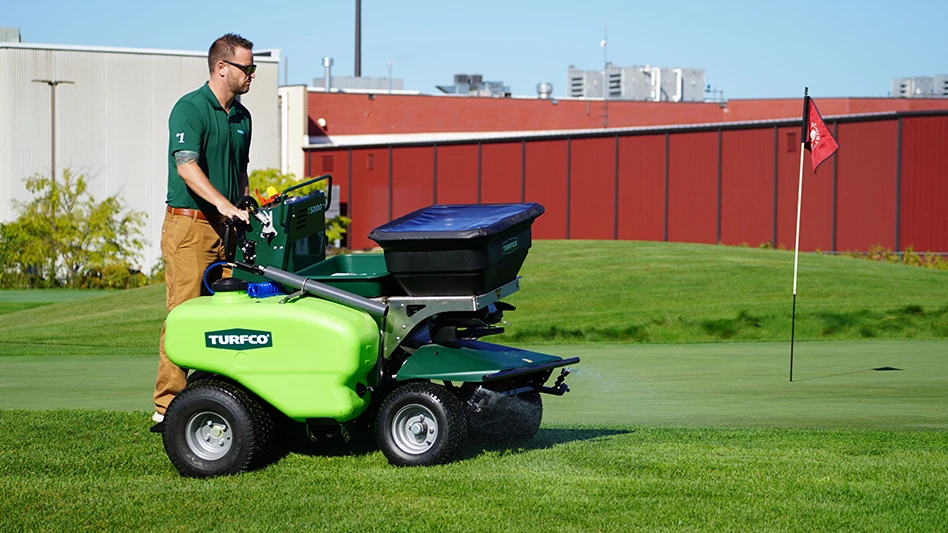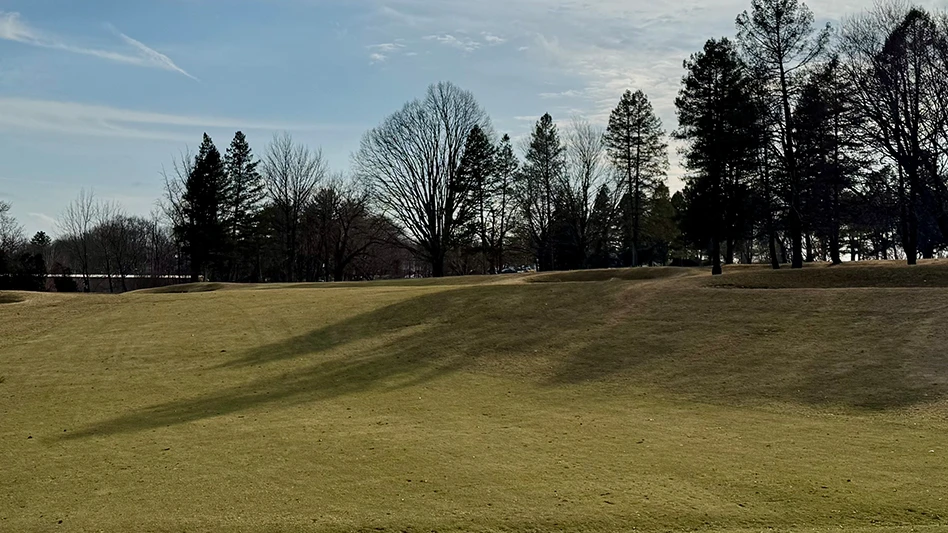When you’re dealing with a classic – whether it’s something like a Duesenberg or an old golf course built by a master architect – you have to be careful. Restoring a classic to its previous grandeur can be extremely slow, time-consuming work.
Therefore, it would be normal to expect that when The Greenbrier opened up the barn, so to speak, in 2002 ato restore its classic C.B. MacDonald-designed and Seth Raynor-modified The Old White Course, the resort in White Sulphur Springs, W.Va., would undertake the task with some trepidation.
Resort management wanted to make sure the restored version of the course had the same flavor and character as the original, with an increased level of challenge to entice and satisfy golf’s current premium on distance.
“It’s a course that people have loved to play for 90 years,” says Robert Harris, director of golf at the resort. “It’s like an old shoe or glove. It just feels very comfortable. The Old White Course has fond memories for generations of Greenbrier guests. We have three or four members that are former presidents of the USGA. When you’re going to renovate something like that, you have to be very careful.”
Especially when research showed the initial course had been lost.
“It had the modern, TV-look of Firestone (Country Club in Akron, Ohio) – the tree lined fairways,” Harris says. “Most of America’s courses try to emulate Augusta or Firestone in the ’50s and ’60s, but what we had here was basically an open farm that was broken up into hundreds of features – bunkers, creeks, mounds of all sorts – and all those went away.”
Adverse conditions
Management committed itself to restoring The Old White’s distinctiveness. Files and data gathered from a historian on property were used during the research process. Aerial photos taken throughout a two-year period depicted the course MacDonald originally created. Lester George, the architect from Richmond, Va., who was hired to do the restoration, remained true to MacDonald’s elements and vision. George, president of George Golf Design, compares the work done on The Old White Course to performing eye surgery.
“Properly done, restorations are very tedious and difficult,” he says. “They take a lot of time, research and planning. If you’re building a new course you pretty much have your way with the site and put in whatever you want to interpret. When you’re doing a strict restoration, it’s difficult, time consuming, long-hours-type work. It’s a very delicate operation and process.”
Especially when you’re dealing with adverse conditions. Because of the popularity of The Old White Course and the fact The Greenbrier’s management didn’t want it closed during the season, the restoration was done in the late fall and winter throughout a four-year period from 2002 to 2006. Generally, work was started in mid- to late October and ran until the course reopened about the second week of May. Snow, sleet, rain and cold temperatures were constant combatants that had to be dealt with. The weather and time constraints were the biggest challenges, says Ronnie Adkins, vice president of Daniels, W.Va.-based Aspen Corp., the builder on the project.
“Those are the two factors that were always driving the project and how we approached things,” he says. “The time frame wasn’t going to change. They needed the place open for their guests in the spring. The weather was totally unpredictable, so you had to be prepared for every possibility that would come along, and, of course, it did.”
Aspen elected to man-handle the situation by using an enormous amount of man power. At times, the company used more than 2,000 man-hours per week, which is more than double the norm, for the project. Workweeks ranged from 70 to 90 hours, seven days a week, with about 60 people on the project. There were no days off until the greens were shaped, which had to be done before Nov. 25 to allow for proper grow-in time. Light plants, which Adkins says are unusual in the golf business, were used so work could start earlier in the morning and continue late at night.
There was plenty of work to do and challenges to meet. Turfgrass had to be delivered in the right quantities at the right time. Irrigation had to be charged and tested even though it was winter. New cart-path construction and relocation was immense. Existing underground utilities were discovered along with utilities that weren’t identifiable before work began. The resort’s internal roads had weight restrictions that required the use of additional trucks to get the necessary materials to the site on time. Flotation tires were used on equipment to eliminate as much damage as possible. Sod had to be contract grown and delivered inside an enclosed trailer to avoid freezing.
It’s all good
The project had to be done in a way in which The Greenbrier didn’t get too far ahead of itself. The four-phase operation was completed on time, and although more than $5 million was spent, the restoration remained on budget.
The project has made The Old White a much better course, Harris says. Before, most of the holes weren’t memorable, and they would blend together in a golfer’s mind. But not now.
“They don’t all look the same,” he says. “There are several open creeks that weren’t there before. The mound work and many of the cross-bunkers were put back in. There’s 18 holes of decision-making. There’s the risk, there’s the reward, there’s the safe route. It’s a little harder to score on the longer shot.”
Everyone is happy with the outcome, says Pat McCabe, director of golf maintenance.
“It worked out great,” McCabe says. “Our golfers enjoy the course. You’ve got to think now when you play. We initiated some fine fescue grasses and some naturalized areas that’s given the golf course added character. C.B. MacDonald and Seth Raynor would be very happy if they played it.” GCI
Bob Seligman is a freelancer writer based in Suffren, N.Y. He can be reached at bhseligman@aol.com.
Get curated news on YOUR industry.
Enter your email to receive our newsletters.Latest from Golf Course Industry
- Atlanta Athletic Club approves funding for master plan
- Maximizing Cultural Practices and Agronomic Benefits with Minimal Surface Disruption
- Real Answers about Spray Nozzle Choices
- From the Course to the Factory: How Customer Insights Drive Innovation
- New & Proven Enzyme Strategies for Sprayable Thatch Management
- Innovating Tomorrow: Wittek’s New Products & Industry Staples
- PBI-Gordon introduces new field development team
- The Cabot Collection announces move into course management





